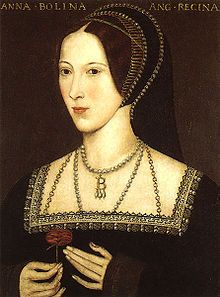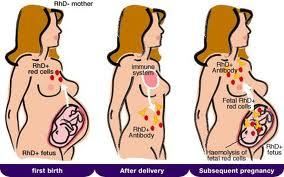Anne Boelyn.
Love her or hate her, it's hard to decide.
Henry the Eighth couldn't really figure it out either.
Anne Boelyn was born somewhere between 1501 and 1507 at Hever Castle in Kent. She was sent to France to wait apon Queen Claude of France and complete her studies, returning to England when she was about twenty. This education in France proved pivotal and may have shaped some of Anne's more reformative beliefs in her later life.
Anne's family, and in particular her Uncle, Thomas Howard, the Duke of Norfolk, were ambitious for position at court. They must have been delighted when Anne quickly caught the eye of King Henry VIII in 1526 and that within a year he had proposed marriaged to her.
The slight problem being, of course, that he was already married to Catherine of Aragon.
Catherine of Aragon, Henry's first wife, had birthed six children. A stillborn son, a stillborn daughter, two sons who lived less than a month, both named Henry, Duke of Cornwell, an unnamed daughter who lived less than a week, and Mary, who would go on to become Queen of England.
She had not borne a living son, and Henry was determined to set her aside.
There is no doubt in my mind that Anne Boelyn was a very intelligent woman and part of the catalyst of the Reformation that led to the formation of the Anglican church. Although she did not begin a sexual relationship with Henry until just before their marriage in 1533, she rapidly assumed political influence in matters of state, particularly around the matter of the annulment of his marriage. Reportedly she wielded an enormous amount of influence over Henry. There is anecdotal evidence that she brought heretical literature to his attention as well as that she was sympathetic to, and actively protected scholars working on the English translations of the Bible.
Unfortunately the intelligence and wit that Henry so enjoyed in Anne Boelyn the mistress was not something he enjoyed in Anne Boelyn the wife.
This became even worse after the child she bore him in 1533 turned out to be girl.
(So unprepared were the royal couple for a birth of a girl the birth announcement read prince. You can see where the 's' has been hastily added to make it read princess. To see the full announcement, click on the picture).
Born slightly premature, Elizabeth was nonetheless extremely healthy and I'm certain readers know the remainder of her story very well.
Anne was soon pregnant again. However she lost a son, Henry, Duke of Cornwell, who died within a few minutes of birth, in 1534. Soon after King Henry was reportedly talking to his advisors about the possibility of divorcing her.
Another miscarriage occurred in 1535.
The final blow and the last straw for Henry occurred on the 29th of January 1536. On this day Anne miscarried a stillborn son of almost four months gestation. She believed the cause to be that Henry had been knocked out five days earlier for several hours. Whatever it was, it proved to be costly. As she lay recovering from what was likely a terrible taxing loss both physically and emotionally, Henry instituted charges of sorcery and moved his new mistress, Jane Seymour, into the palace.
A few months later Anne was charged with treason and moved to the tower. On the 19th May 1536 she was executed at the Tower of London.
Anne's mistakes perhaps lay in her personality and certainly in her powerful and temperamental choice of lover. However but for a liveborn son history might have been very different.
Catherine of Aragorn's obstetric history is quite typical for the time period with stillbirths at term and neonatal/infant mortality accounting for the majority of her problems. This indicates a typical story of problems in labour, problems of infection and breathing in the newborns, all things easily preventable and treatable today but that took high tolls in the era before obstetric intervention.
Anne Boelyn, on the other hand, has a slightly more unusual story. In particular the pattern of her pregnancy loss.
The human body has a marvellous immune system one designed to protect us from all harm. But sometimes that immune system can learn to recognise something as harmful when perhaps we would rather it didn't. For example when a woman who has a negative blood group is carrying a baby with a positive blood group. (Known as the Rhesus factor)
The first pregnancy will be fine. This is because generally the mother will not have developed antibodies, yet. After that pregnancy (what is known as a sensitising event) some of the babies blood will pass into the maternal circulation. After that any future pregnancy with a positive baby will be affected.
A woman who is Rhesus Sensitised is at substantial risk of Haemolytic disease of the newborn. This is where her own immune system attacks the blood cells of her baby. The baby becomes significantly anaemic and jaundiced, and it may result in the babies stillbirth or death soon after birth. This becomes more and more severe with each successive pregnancy.
This pattern fits perfectly with Anne's obstetric history.
Miscarriages as late as four months were unusual, even in Anne's time, with most occurring before twelve weeks or as stillbirths due to complications during labour at term. Unless, of course, something else was wrong.
That something else was Anne's immune system. The system designed to protect her from harm ended up doing her the ultimate harm.
These days Rhesus negative women are given injections to suppress their immune response during pregnancy and at any sensitising events. So much so that stories like Anne's are increasingly rare.
If only Henry had had a negative blood group. If only anti-D had been available.
But then, of course, there would have been no Elizabethan reign.
And that would have been a tragedy.



I love Anne Boelyn, she's probably my favourite female historical figure, but I hadn't heard of this before. So a really interesting read! Thanks for that Turks, well worth avoiding study for. :D
ReplyDeleteAmusingly enough it's the study that's at fault for this after all - somebody who shall remain nameless made me watch that wasteland of historical fact the Other Boelyn Girl the other day. I went to check the actual facts on Anne's obstetic history and thought, dayum if this woman walked in my door I'd really want to know her blood group and antibody status. I went off to check the text books and guidelines to confirm it, and there you go. (So now I know Rhesus sensitisation REALLY WELL - thanks Anne!)
DeleteOf course, you wouldn't see this pattern today. You still hear women in their fifties and sixties talking about histories like this, and occasionally indigenous women in isolated regions. But you don't really see it much anymore. Thank goodness.
I love the way you find these patterns and diagnoses! It's always so fascinating. It seems as though Henry was doomed by his genetics (and those of his wives) right from the start. And, of course, it's fun to imagine how different things might have been if events had been different.
ReplyDeleteLol. It's my job applied to historical figures :D :D. My ideal would be to have all these people as patients.....:p
DeleteFascinating as always. The Tudor period is always interesting to me.
ReplyDeleteFYI, though it's Catherine of Aragon not Aragorn unless she fond her way to Middle Earth and I didn't hear about it. ; )
Ahaha. Ooops. Edited, thanks for the pickup.
Delete(I'm imagining the most AWESOME crossover fic right now)
Fascinating. I am trying to research historical rulers with sexual dysfunctions. Surprisingly the web is barren on researched material. I really think this page is well thought out and researched. Thank you Any ideas you can give me on my research?
ReplyDeleteHave a look here. http://medicalhistory.blogspot.com.au/2012/02/louis-penis-problem.htmlIt's probably what you're looking for,
DeleteKatharine of Aragon was also the product of a family where incestuous marriages were the norm. That couldn't have helped her ability to conceive.
ReplyDelete